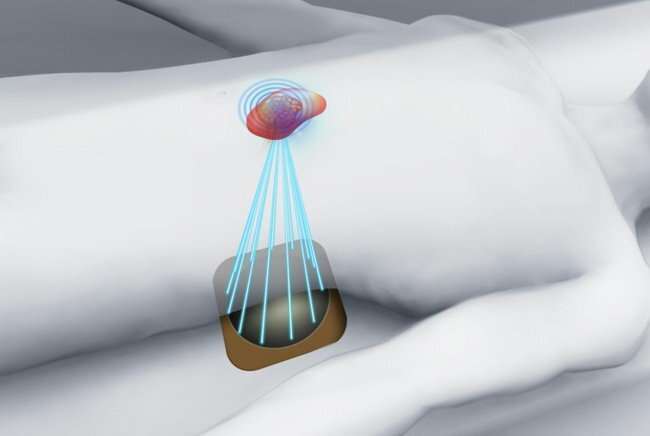Inducing accurately controlled ‘fever’ in tumors to fight cancer

Heating tumors can greatly enhance the effect of radio- and chemotherapies for cancer. This increases the chances of recovery and helps reduce the use of radiation and drugs, leading to fewer side effects for patients. An effective way of heating tumors is via ultrasound, which is noninvasive and ensures pinpoint accuracy. To optimize the cancer-killing effects of radio- and chemotherapies using thermal ultrasound treatments, Ph.D. candidate Daniel Deenen has developed self-learning algorithms that automatically steer the beams based on the current tumor temperature measurements. This new method could drastically improve patients’ chances for curing from cancer. Deenen defended his thesis on Thursday 3 December.
With more than 18 million new cases and 9 million deaths each year, cancer is the second most significant cause of death globally. In fact, in the Netherlands it is the leading cause, with almost one out of every three deaths being due to cancer. In addition to surgery, cancer treatments typically consist of radio- and chemotherapy, which due to their toxicity are limited in their admissible dose and can lead to severe side effects for the surviving patients.
Fever temperatures
In hyperthermia therapy, tumors are heated to fever temperatures of about 42 °C for 60 minutes or more, which significantly enhances the therapeutic efficacy of radio- and chemotherapies without causing additional toxicity or side effects. As a result, hyperthermia can be used to substantially improve the chance for disease-free and long-term survival, or allows for the use of lower systemic doses of radiation and drugs to reduce the severity of the negative side effects typically associated with cancer treatment. However, accurately controlling the tumor temperature is essential for a successful hyperthermia treatment outcome.
In magnetic-resonance-guided high-intensity focused ultrasound (MR-HIFU) hyperthermia treatments, powerful and millimeter-accurate heating is applied via ultrasound waves, while the tumor temperature is measured in real time using an MRI scanner. This allows for a completely noninvasive treatment, which greatly contributes to the patients’ comfort and well-being.
Controllers
The goal of Deenen’s Ph.D. research was to develop algorithms or ‘controllers’ that automatically steer the HIFU beams based on the current tumor temperature measurements in such a manner that the tumor temperature and, therefore the cancer-killing effects, are optimized. These algorithms learn the tumor’s thermal behavior from measurement data and then adapt the HIFU steering correspondingly. The result is personalized hyperthermia treatments in which accurate and safe heating is ensured.
This is extremely important in practice, since each patient and tumor is different, and may even change over time. Furthermore, he designed controllers that enable the optimal treatment of larger tumors than previously possible. The researcher tested these algorithms on a clinical MR-HIFU setup at, and in collaboration with, the University Hospital of Cologne (Germany) using artificial tissue-mimicking models (so-called phantoms) and in real-life in-vivo experiments for large animals, proving that they can be applied successfully in clinics.
Clinical trials
Source: Read Full Article
